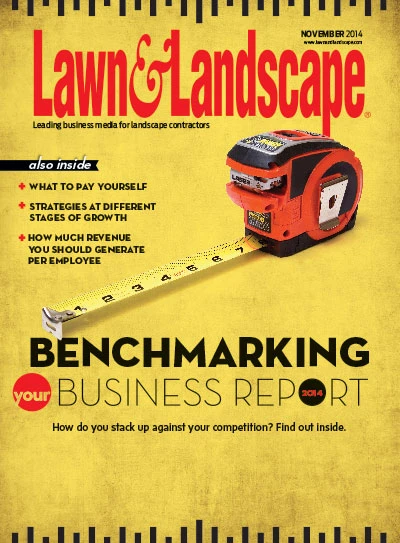
 Last winter, traffic blockages on the Mississippi River held up road salt deliveries to the snowbelt causing materials shortages. Some snow and ice removal companies turned to alternative strategies to handle customer demand for anti-icing and deicing treatments.
Last winter, traffic blockages on the Mississippi River held up road salt deliveries to the snowbelt causing materials shortages. Some snow and ice removal companies turned to alternative strategies to handle customer demand for anti-icing and deicing treatments.
Take the temperature.
In the Milwaukee offices of Reliable Property Services, COO Tom Hougnon says his company faced challenges last winter in getting enough granular road salt to meet demand. The company used liquid deicer to get through the end of snow and ice season. Reliable Property Services has six offices in the Midwest with headquarters in St. Paul, branches in Minnesota’s Twin Cities, three in the Wisconsin cities of Milwaukee, Racine and Madison, as well as a location in Des Moines, Iowa.
All together, Reliable Property Services uses about 90 percent granular deicing material and 10 percent liquid. While the Minnesota and Wisconsin locations depend heavily on granular deicing, it’s in Des Moines where they have the greatest demand for liquid deicing. Throughout the winter months, Hougnon says Des Moines tends to stay about 10 degrees warmer than the company’s other locations. That slight temperature variance, Hougnon says, makes all of the difference.
“We find that if we’re at 15 degrees or colder, mostly at our Minnesota or Wisconsin branches, we have a little more trouble with the liquid product. It could actually freeze. You’re mixing the product, the calcium or magnesium, with water. There is water involved with it. Once the icing capabilities are used up, it can freeze. It’s certainly done that before. It’s very temperature sensitive. It’s an early season or late season product,” Hougnan says.
Carol Beeler, marketing and communications manager for U.S. Lawns, says some of the company’s franchisees resorted to shopping at Costco and Home Depot to purchase pool salt at retail prices to meet demand for granular deicing material. At least one of the company’s Illinois franchisees tried a liquid deicing material for the first time because he could not buy the road salt needed. Although the liquid material worked in a pinch, Beeler says more testing is required before other franchisees that handle ice and snow removal pass judgment on the cost-effectiveness of the liquid deicing and anti-icing materials.
The right mix.
Scott Zorno, co-owner of Care Enterprises, who works in the mountains 50 miles north of Denver, isn’t surprised to hear his counterparts in the Midwest experience freezing problems with their in-house mixed deicing agents. Zorno has used liquid deicers since 1999, (spurred on by the Colorado Department of Transportation’s switch to liquid deicing materials about two years earlier), and has taught three classes on the subject. Three years ago, based on requests from students, he launched a company called HighCountry Ice Solutions that manufactures liquid deicing spray rigs.
Zorno says most companies that mix their own deicer are using a kind of salt brine, “a glorified salt water.” The salt brine, Zorno says, “doesn’t do much below 20 degrees.”
At Care Enterprises, Zorno almost exclusively uses a premade enhanced magnesium chloride (MgCl2) brine deicer called MeltDown Apex produced by Colorado-based EnviroTech Services. “The product we use goes well below zero. I’ve used it at 5 below with good success,” Zorno says. Environmental conditions by region, Zorno says, do factor greatly into what kind of anti-icing agent should be used.
“My environment, (in the mountains of Colorado), has a tendency to be low humidity until the storm actually starts. We don’t have a high humidity level before the storm starts, so that makes it possible to put anti-icer down 24 to 48 hours ahead of time. It’s less inclined to pick up air moisture. That’s what creates problems in other environments.
“I have less air moisture until the storm comes. Some environments have rain before a storm starts, and that will not work for an anti-icer. If there’s enough rain to wash down a gutter, you can’t use anti-icer,” Zorno says.
What’s the difference between anti-icer and deicer? An anti-icer is applied to a pavement surface prior to a storm and it melts snow and ice from the bottom up. A deicer is applied during or after a storm and it melts from the top down.
The goal of both anti-icing and deicing is to break the bond between the ice/snow and pavement surface to allow the ice to melt. Quite often, Zorno says, the product used for both anti-icing and deicing may be the same with just a change in application concentration.
Zorno’s application rates rule of thumb for liquid anti-icing and deicing treatments:
- Anti-icing: Approx. 1 gallon per 1,000 sq. ft., may vary by pavement type
- Deicing: Approx. 1.75 gallons per 1,000 sq. ft., may vary by pavement type
Safe and clean.
In Des Moines, Hougnon says his customers often request liquid deicer to protect turf and plants from salt burn damage that can be caused by overspray of granular material.
Another advantage of a liquid deicer is the ease of cleanup for the spray vehicle. Zorno says that a vehicle used to apply granular salt must be fully emptied and cleaned to avoid corrosion. It can be an arduous task, he says. Clean up of a truck spraying liquid deicer simply needs to be rinsed off the vehicle.
A disadvantage of liquid deicing, Zorno says, is in the case of what he terms ‘glare ice.’
“Glare ice is that shiny, reflective, super-smooth ice that occurs from a broken water main or pipe. You know, how it floods and makes it thick and smooth? Liquid is not good for dealing with that. You need some kind of a granular that will burrow ditches into the ice then throw liquid on top of it. I’ve had to do that,” Zorno says.
Sponsored Content
Lawn and Landscape Marketing on a Budget
Digital marketing can feel overwhelming when you’re working with a limited budget. Websites, SEO, social media, and paid ads can quickly add up, but you don’t need to do everything to see results. By focusing on cost-effective strategies, you can still make a big impact without overspending.
Sponsored Content
Lawn and Landscape Marketing on a Budget
Digital marketing can feel overwhelming when you’re working with a limited budget. Websites, SEO, social media, and paid ads can quickly add up, but you don’t need to do everything to see results. By focusing on cost-effective strategies, you can still make a big impact without overspending.
Sponsored Content
Lawn and Landscape Marketing on a Budget
Digital marketing can feel overwhelming when you’re working with a limited budget. Websites, SEO, social media, and paid ads can quickly add up, but you don’t need to do everything to see results. By focusing on cost-effective strategies, you can still make a big impact without overspending.
Sponsored Content
Lawn and Landscape Marketing on a Budget
Digital marketing can feel overwhelming when you’re working with a limited budget. Websites, SEO, social media, and paid ads can quickly add up, but you don’t need to do everything to see results. By focusing on cost-effective strategies, you can still make a big impact without overspending.
Sponsored Content
Lawn and Landscape Marketing on a Budget
Digital marketing can feel overwhelming when you’re working with a limited budget. Websites, SEO, social media, and paid ads can quickly add up, but you don’t need to do everything to see results. By focusing on cost-effective strategies, you can still make a big impact without overspending.
In the Minnesota and Wisconsin markets where customers are used to seeing granular applications, the liquid is a tougher sell, Hougnon says. “If the customer doesn’t see the granular pellets on the ground, they don’t think we did anything,” Hougnon says. “Building inspectors actually come out and look for the granular. They could have a perfectly slip-free parking lot but if they don’t see it … there’s a perception issue.”
For liquid deicing to truly catch on, Hougnon says there's a need for more education “for the customer to understand what we’re doing.”
The author is a freelance writer based in Mount Vernon, Wash.
Get curated news on YOUR industry.
Enter your email to receive our newsletters.
Explore the November 2014 Issue
Check out more from this issue and find your next story to read.
Latest from Lawn & Landscape
- Mariani Premier Group acquires Hazeltine Nurseries
- EnP Investments adds Mark McCarel as Northeast territory sales manager
- Our April issue is now live
- Ready or not
- Tribute to an industry guru
- Caterpillar names Christy Pambianchi as chief human resources officer
- Ceramica acquires Fundraising Brick
- Senske Family of Companies acquires Huron Pest Control








